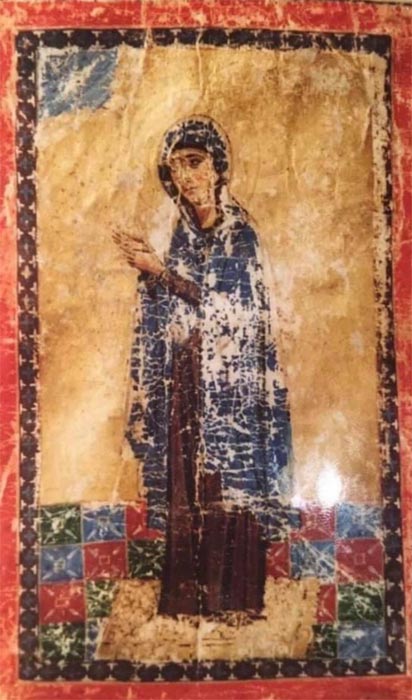Madonna di Lepanto

Madonna di Lepanto – Palermo Parchment
A copy of the holy icon of the Virgin Nafpaktiotissa is kept at the Monastery, and, in accordance with the traditional monastic rituals, is used in the litanies on the feast days of the Virgin of Nafpaktos, reviving the centuries-old tradition of the celebration of this special feast.
In fact, the new association, under the name “Fraternity of the Virgin Nafpaktiotissa”, (315/ 11-11-1998) is a continuation and revival of the historical Association of the same name. This Fraternity of clerics and laypeople was first founded in the 11th century, and its statute, written in Greek on an ornate two-folio parchment, is currently kept at the museum of the chapel of the palace (Capella Palatina), in Palermo, Sicily. The upper section of the Parchment has been decorated with the aforementioned icon of the Virgin Nafpaktiotissa as a frontispiece.
The history of the Virgin of Nafpaktos is intrinsically connected with the historical Byzantine parchment kept at the Regio Cappella Palatina in Palermo, Sicily (State Museum of the Chapel of the Palace). This parchment is a copy of the statute of an 11th-century religious fraternity that was active around Thebes and centered its devotional practices around the icon of the “Most Holy Theotokos Nafpaktiotissa”, which was kept at the Monastery of Nafpaktiotisson. The parchment most likely ended up in Palermo in the aftermath of a Norman raid on Thebes in 1147.
According to the statute itself, the fraternity was founded in 1048 AD. It is signed by 19 clerics and 30 laypeople, including a number of women. The fraternity seems to have pursued spiritual goals, dominated by the veneration of the Virgin and her icon. Each month, the icon would be paraded to members’ houses and venerated with holy rituals. The fraternity also appears to have dedicated prayers for the health of its members and for the benefit of both the living and the departed.
In its upper section the parchment bears a full-length miniature of the Virgin, who stands atop a marble floor and wears a blue cloak over a crimson chiton. The Virgin is depicted performing a deesis, an iconographic type of the Virgin that was widely established in the mid-11th c. The miniature is in all likelihood a copy of the icon of the Virgin Nafpaktiotissa, which was either transferred to Thebes from Nafpaktos or copied. In any case, the fact that a cult developed around this particular icon so far from its home is a testament to its widespread veneration.
